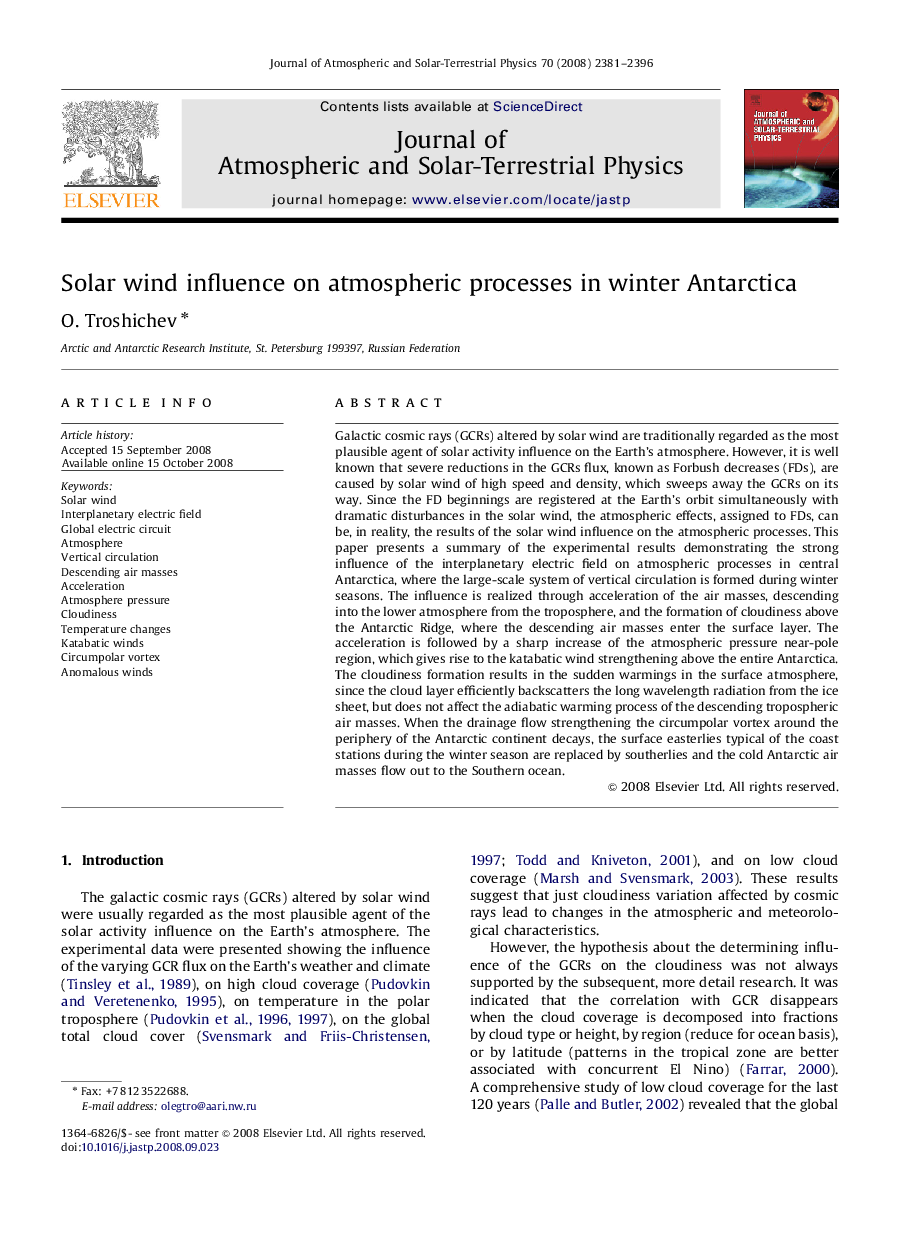| کد مقاله | کد نشریه | سال انتشار | مقاله انگلیسی | نسخه تمام متن |
|---|---|---|---|---|
| 1777708 | 1523674 | 2008 | 16 صفحه PDF | دانلود رایگان |

Galactic cosmic rays (GCRs) altered by solar wind are traditionally regarded as the most plausible agent of solar activity influence on the Earth's atmosphere. However, it is well known that severe reductions in the GCRs flux, known as Forbush decreases (FDs), are caused by solar wind of high speed and density, which sweeps away the GCRs on its way. Since the FD beginnings are registered at the Earth's orbit simultaneously with dramatic disturbances in the solar wind, the atmospheric effects, assigned to FDs, can be, in reality, the results of the solar wind influence on the atmospheric processes. This paper presents a summary of the experimental results demonstrating the strong influence of the interplanetary electric field on atmospheric processes in central Antarctica, where the large-scale system of vertical circulation is formed during winter seasons. The influence is realized through acceleration of the air masses, descending into the lower atmosphere from the troposphere, and the formation of cloudiness above the Antarctic Ridge, where the descending air masses enter the surface layer. The acceleration is followed by a sharp increase of the atmospheric pressure near-pole region, which gives rise to the katabatic wind strengthening above the entire Antarctica. The cloudiness formation results in the sudden warmings in the surface atmosphere, since the cloud layer efficiently backscatters the long wavelength radiation from the ice sheet, but does not affect the adiabatic warming process of the descending tropospheric air masses. When the drainage flow strengthening the circumpolar vortex around the periphery of the Antarctic continent decays, the surface easterlies typical of the coast stations during the winter season are replaced by southerlies and the cold Antarctic air masses flow out to the Southern ocean.
Journal: Journal of Atmospheric and Solar-Terrestrial Physics - Volume 70, Issue 18, December 2008, Pages 2381–2396